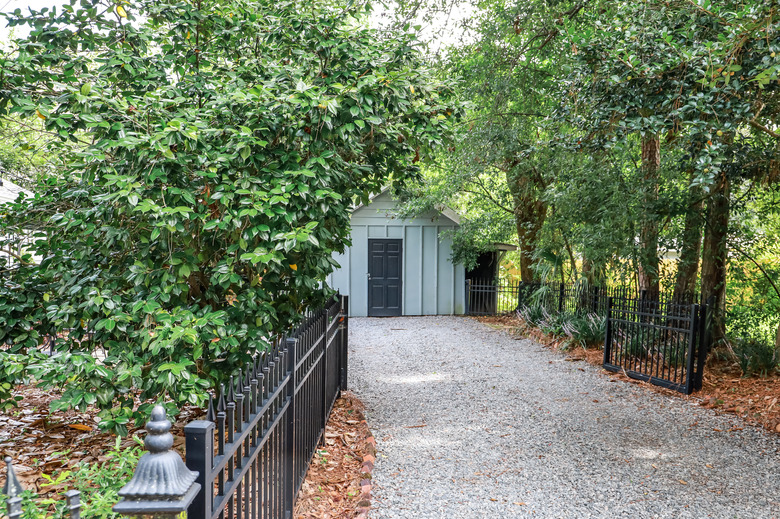How To Convert Yards To Tons In Gravel
We may receive a commission on purchases made from links.
You can afford to guesstimate when you're buying vegetables for a recipe, but you can't afford to guesstimate when buying gravel for landscaping projects to beautify your home. Order too little, and you'll have to pay and wait for a second delivery; order way too much, and you're stuck with an unsightly mountain in your yard. If you're going to buy just the right amount of gravel, you need to do some quick calculations, and they're a lot easier than you might fear.
Calculating Gravel Coverage Area
Calculating Gravel Coverage Area
Two measurements matter most when you're calculating how much gravel you need: linear square footage of the area and the depth of the gravel layer you need for your project.
Measure the width and length of the area you want to cover using a laser distance meter or tape measure. The depth of gravel you'll need varies depending on how it's being used. If you're landscaping with pea gravel, for example, you might use just a 2- or 2.5-inch layer of the material. By contrast, creating a gravel driveway with a gravel sub-base requires several layers of material for a total depth of about 18 inches.
Multiply the length, width, and depth of your area (be sure to use the same unit of measurement for each number). For example, say you're covering a 5-foot-square area with a 3-inch layer of gravel. Convert 3 inches to 0.25 feet and then multiply 5 x 5 x 0.25 to get 6.25 cubic feet. Divide this number by 27 to get cubic yards. You would need a little less than 0.25 cubic yards of gravel to cover this area. These numbers matter because gravel is often sold by cubic feet or cubic yards rather than by weight.
Not All Gravel Is Created Equal
Not All Gravel Is Created Equal
There's no such thing as a standard weight for gravel because there are many different kinds of gravel sold, and some are heavier than others. Composed of small, rounded pebbles of various colors, pea gravel is commonly used for landscaping. Crushed stone, white marble chips, and aggregates of crushed concrete and sand are also sold as gravel.
The material itself and the size of the gravel both affect overall weight. The smaller the individual pieces, the more tightly compacted they are and the more they weigh. One cubic yard of 3/4-inch coarse gravel weighs about 2,565 pounds (1.28 tons), while 1 cubic yard of 3/8-inch pea gravel weighs closer to 2,700 pounds (1.35 tons). These variations are why it's not very useful to think about ordering gravel by the ton.
How Much Gravel Do I Need?
How Much Gravel Do I Need?
In the old days, you might have needed to do complex math by hand to work out how much gravel you would need for a project. Today, there's no practical reason to convert yards to tons or do any calculations about gravel weight. All you need are the dimensions of the area you're filling. Many retailers that sell landscaping materials have online calculators that tell you exactly how much of a particular gravel type you need to buy based on the length, width, and depth of the project area.
Even if you're buying from a retailer that sells gravel by the ton, you're better off telling them how many cubic yards of space you need to fill rather than calculating your own tonnage. Let the experts determine exactly how many tons you need based on volume and the kind of gravel you want to buy.
